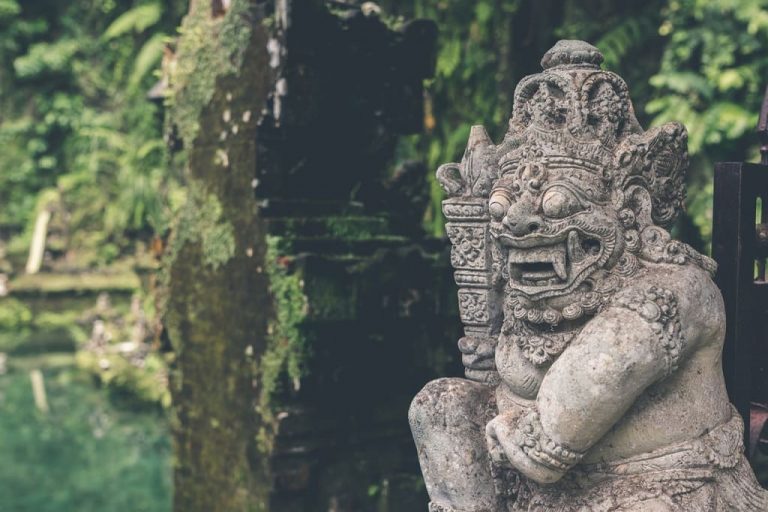The Indian mythological tradition with its treasure-trove of stories, also provides a cornucopia of insights into Indian societal standards and trends. Even though the discussion and the challenge to mainstream heteronormativity, gender, and sexuality has gathered momentum and started to seep into the fabric of modern Indian society fairly recently, there was always a niche space for queer identity in the Indian society. There was a cultural space within which these identities existed, although the treatment of the same, unfortunately, remained marginal.

With the percolation of Victorian morality and values into India’s political and social imagination during the colonial rule, the queer identity was further side-lined and even criminalised. In Hindu mythology, we find several examples of queer identity, which testify to the ancients’ acceptance of a gender identity that was non-binary. The Ramayana and the Mahabharata, the two most popular epics from the Indian subcontinent, are suffused with many stories that tell us about the multiplicity of identities that existed and continue to exist, although, of course, the parlance for these identities has changed, and the language has become more standardised and global. In Indian literature and mythology, we come across terms such as Nar (man), Nari (woman), and Napunsak (not quite a man). The third gender or the hijras, as they are colloquially referred to in the Indian society, have always had a demarcated space in the social fabric; the treatment, the visibility, and the opportunities accorded to them remain unequal, as compared to the people who identify with a mainstream gender identity.

The tales of mainstream deities changing their gender, or combining the two genders together to form an androgenous identity, are commonly observed in the epics. The examples of Ardhanarishwara, or the amalgamation of Shiva and Shakti to form one being, represents the move of gender identity beyond the dual. A similar synthesis is seen in the figure of Lakshmi Narayana, where Lakshmi and Vishnu manifest together in a form that is both male and female. The story of Mohini, where Vishnu becomes a female enchantress, is utterly fascinating. Some local legends lend us the story of Shiva getting attracted to Mohini, and their union leading to the creation of Ayyappa, a popular deity in Kerala.
The Ramayana gives us an example of humans, and not gods or deities, who had a non-binary gender identity. When Rama was exiled, his entire kingdom began to follow their beloved prince into the forest. Rama had to eventually ask the people to go back to their homes. He commanded, “Men and women, please wipe your tears and go away.” When Rama returned from his exile, he saw a group of people, standing at the threshold of the kingdom and the forest. The devoted group that had stayed behind at the edge of the forest were those who identified as neither men nor women. Rama then rectified his mistake and asked the group to go back.
In the Mahabharata, and in the more recent re-telling of mythology, Shikhandi: And Other ‘Queer’ Tales They Don’t Tell You by Devdutt Pattanaik, we come across the character of Shikhandi. The tale of Shikhandi is one of the greatest affirmations of the mythological trans identity. Born as Amba in her previous life, and abducted by Bhishma, along with her sisters, for his brother’s swayamvara, Amba was reborn as Dhrupada’s daughter, Shikhandi. Shikhandi was brought up like a man, and was eventually married to a girl. The wife, upon finding that she was married to someone who was biologically a woman, was devastated and ran away.
Shikhandi was heartbroken, but a yaksha lent Shikhandi his manhood, who went on to bear children with his wife. Later in the Mahabharata, Shikhandi is used to defeat Bhishma, who recognises his original form as Amba, and refuses to pick up a weapon against a ‘woman.’ Arjuna takes the opportunity to attack Bhishma with a bombardment of arrows and kills him.
In the great hero Arjuna’s life as well, we see instances of gender variance and fluidity. In the Padma Purana, we find a story of Arjuna transforming into a woman and participating in the divine dance, the ‘raaslila,’ with Krishna and his gopis. In the Mahabharata, Arjuna becomes a ‘kilba’ or a transgender for a year, when a forlorn Urvashi curses him for rejecting her advances. He goes on to live as Brihannala in the kingdom of King Virata, and becomes an instructor of music and dance to the princess and her attendants.
The examples of queerness in the Indian tradition are many. In a time when we are challenging the disparity between genders and accepted notions of identity and sexuality, it is perhaps these very stories that may provide a space where those who are unable to accept these identities, will find a historic and religious affirmation. By looking at our past, our roots, we may be able to find tales that could be retold to re-educate people, and create a dialogue in the society to accept and appreciate the differences between people.




